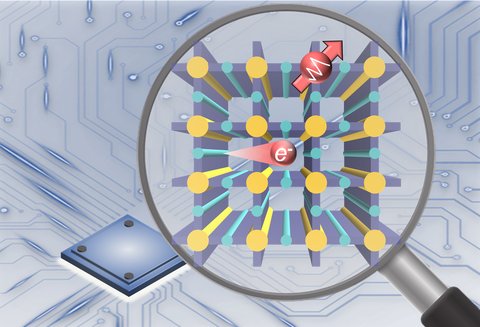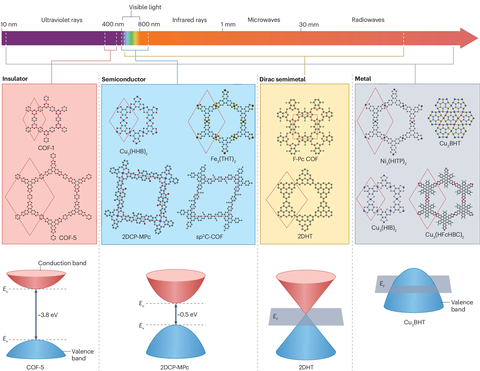08.11.2024
Electronic and Quantum Properties of Organic Two-Dimensional Crystals
Summary: In a paper published in Nature Reviews Materials, scientists at the Max Planck Institute of Microstructure Physics and TUD share insights on exploring organic 2D crystals for electronic and quantum communities, aiming to bridge ideas from chemistry, materials science, and physics to inspire innovative concepts for future research.
Organic 2D crystals (O2DCs) are an emerging class of synthetic layered materials, composed of π-conjugated building blocks, that display extended π-conjugation in the 2D plane and/or interlayer electronic couplings. The π-conjugated building blocks are connected in-plane by strong linkages, typically covalent or coordination bonds, and layers are held together by non-covalent interactions. The out-of-plane couplings between layers, driven by π–π stacking interactions, influence the stability and electronic properties of the materials, a phenomenon termed the ‘proximity effect’. Like inorganic 2D crystals, O2DCs can be synthesized by exfoliation or directly on surfaces or at interfaces, yielding monolayer or few-layer nanosheets. Their modular nature and layer-dependent properties allow their structures and properties to be customized extensively at the molecular level. Advances in engineering the structural topology, building blocks and linkage chemistry of O2DCs, as well as in understanding their structure-property relationships, have aided the discovery of new materials that behave as insulators, semiconductors, semimetals or metals, with direct and indirect ranging from ultraviolet via the visible range and infrared into the radio frequencies region. In addition, theoretical and experimental studies have demonstrated the presence of unique quantum states in O2DCs. These characteristics position O2DCs as a a versatile toolkit for exploring fascinating electronic and quantum phenomena that are crucial for potential applications in electronics, optoelectronics, spintronics, quantum computing and quantum sensing.
A recent review by researchers from the Max Planck Institute of Microstructure Physics and TUD, published in Nature Reviews Materials, delves into the advances, challenges, and opportunities in this rapidly evolving field. In particular, the authors discussed the structure-property relationships and synthetic strategies of O2DCs, with particular emphasis on their unique electronic structures, charge transport properties and the emergence of quantum states, such as topological and superconducting phases, alongside different spin states. Furthermore, emerging device applications of O2DCs across electronics, optoelectronics and spintronics are highlighted, followed by a critical overview of future research and the persistent challenges in synthetic chemistry, physics and materials science that must be addressed to further advance this field. This work provides a foundational roadmap for developing O2DCs and their integration into advanced electronic, optoelectronic, and quantum technologies.
Acknowledgements: This work was financially supported by an ERC Consolidator Grant (T2DCP, no. 819698) and DFG projects (2D polyanilines, no. 426572620; GRK2861, no. 491865171; and CRC 1415, Chemistry of Synthetic Two-Dimensional Materials, no. 417590517). The authors thank P. L. Koko and R. Zhao for providing the energy levels in Fig. 1b,f.
Reference: Zhiyong Wang, Mingchao Wang, Thomas Heine, and Xinliang Feng. Electronic and quantum properties of organic two-dimensional crystals. Nat. Rev. Mater. (2024). https://doi.org/10.1038/s41578-024-00740-8


